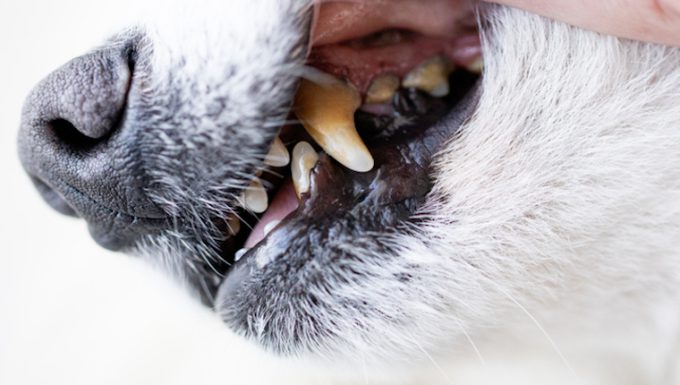Gingival hyperplasia in dogs is caused by the gums becoming inflamed and enlarged. The condition can result in periodontal disease.
Dogs with enlarged gums can be tempted to chew on them. Sometimes, a dog will chew through the tissue.
All dogs can develop the condition, but certain breeds including Great Danes, Boxers and Dalmations suffer from it the most.
Generally, practicing good dental hygiene can help to avoid the condition.
If you see the signs of gingival hyperplasia in your dog, then get to a veterinarian for a proper diagnosis and treatment.
Here’s what you should know about the symptoms, causes, and treatments for the condition.
Symptoms Of Gingival Hyperplasia In Dogs
Gingival hyperplasia in dogs produces symptoms that affect the gums. Some of the most common symptoms include:
- Inflamed gums
- Thickened gums
- Tissue growth on the gum line
- Redness of the gums
- Pockets emerging in the gums
- Bleeding
Causes Of Gingival Hyperplasia In Dogs

A build up of bacteria and plaque along the gum lines often causes the condition.
Additionally, the following breeds are most prone to developing it:
- Boxers
- Great Danes
- Doberman Pinschers
- Dalmatians
- Collies
Finally, immunosuppressant drugs can also bring on the condition.
Treatments For Gingival Hyperplasia In Dogs
Firstly, your vet will want to physically examine your dog’s mouth and teeth. Secondly, a biopsy and an X-ray can be used to rule out other underlying conditions.
Surgical repair is usually recommended to treat the condition. This can get rid of any pockets that have emerged on the gums. The process will also repair the shape of the gum line.
Additionally, pain medication is commonly prescribed. As always, follow your vet’s instructions when it comes to giving your dog any medicine.
While treating the condition, your vet will also deep clean your dog’s teeth. Make sure to ask your vet about a regular teeth cleaning routine. This way you can help your dog avoid conditions such as gingivitis and periodontal disease.
Have you ever cared for a dog who suffered from gingival hyperplasia? How did your vet help your dog recover from the condition? Let us know in the comments section below.





